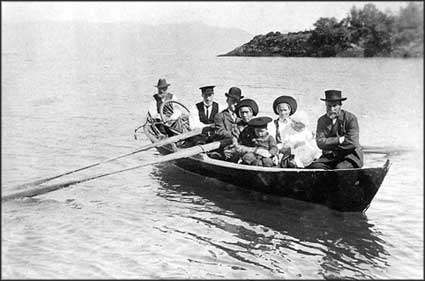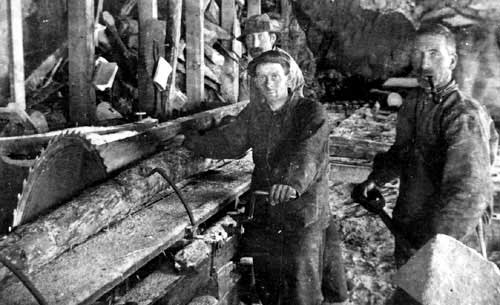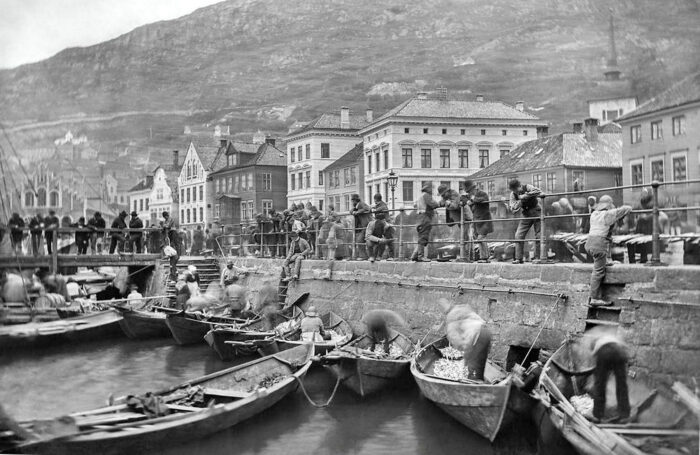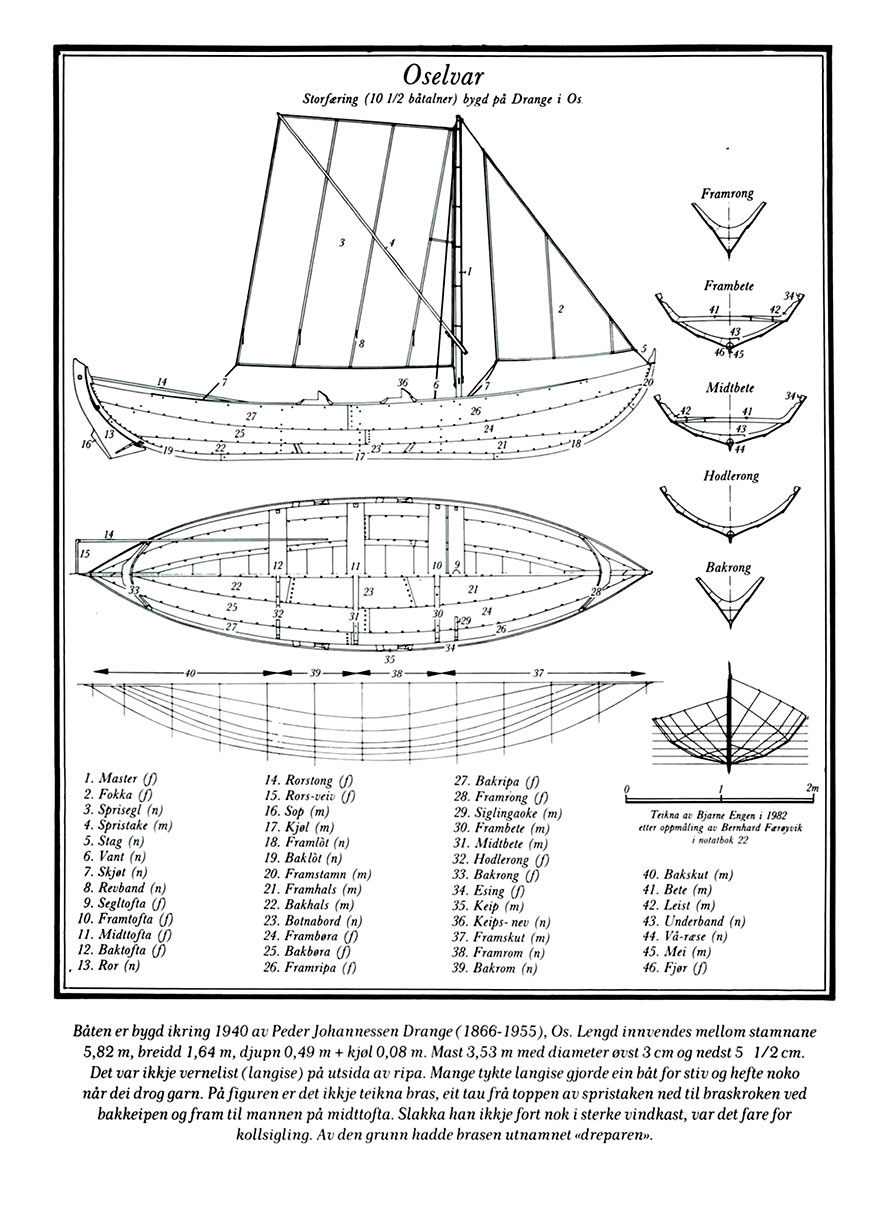The Oselvar is a clinker-built wooden boat that was very common along the southwest coast of Norway for many hundreds of years. The boat type has had a development that goes back several thousand years, and the boat shows clear similarities with both the Halsnøy boat (circa 300 AD) and the Gokstadfæringen (circa 900 AD). In the 19th century, the Oselvar was the dominant type of small boat along the south-west coast of Norway.
When the fishermen began to use larger boats with engines, only Os and Strandebarm survived as boatbuilding villages in our county, Hordaland. This boat is build as a rowing and sailing boat, softly built from thin materials and only three gangways. It has been known as a particularly light rowing boat and fast sailer, and also as a safe boat. The boat is still used for racing – with its own Norwegian championship.

The fjord was the road, and the boat was the means of transportation
The remains of the first rowing boats can be found at Mangersnes/Radøy, where they built boats between the year 0 and 600 AD. There they found an iron rivet (rivet/boat seam), approx. 200 AD and a boat from the year 0. On Halsnøy in Kvinnherad, in 1896, they found a wooden boat from around 200 AD, that is to say from the Roman Iron Age.
From 700 AD do they use seals, i.e. trapezoidal raw seal, woven from wild sheep wool. The Vikings from Western Norway went on warlike raids or peaceful trades. They steer west, in a westerly direction, to England, France, Ireland or the North Sea islands of Shetland (Shetland), Orkney, Southern Islands (Hebrides). Or they take Austria, through the Baltic Sea, the Baltics and all the way down to Miklagard (Istanbul).
It was the Faroese or the six-year-old that were the models when they built the sleek, flat-bottomed, fast Viking ships that made them masters of the Nordics. Inside the Gokstad ship (from 800 AD) they found three rowing boats, including a wooden ferry (6.5 m) which is most identical to the wooden oselvarn of today.

The boat building tradition survived through the Middle Ages; the expertise passed from father/grandfather to son/grandson, on the beaches around Bjørnafjorden. The boats were named after the town in which they were created: Osbåt, Fusabåt, Austevollsbåt, Tysnesbåt. Later they all became orphans. Boat building was a craft in the small harbors or boathouses, and eventually a good livelihood for the fisher-farmers in outer Midt- and Sunnhordland. The forest-poor fishing community on Shetland gradually became a major customer for the Norwegians. Findings indicate that the Shetlanders bought West Norwegian rowboats as far back as the Viking Age, and some time after the Black Death exports picked up. It probably had something to do with the fact that they learned to cut timber on reeds, which must have been a true revolution.
From the early 16th century until around 1850, eels and six-elders were produced and exported to Shetland in varying quantities per year. year, from 20 80, with a record in 1624 (87 boats).
In 1664, 31 boat builders were named and registered around Bjørnefjorden
In what is today Bjørnafjorden municipality, we found boat builders at Ballandsneset, Drangsvågen, Askvik, Sagebakken, Geitarøya, Nordstrøno, Sørstrøno, Forstrøno, Sundøy, Brattholmen, Røttinga, Bjørnavika, Haugland, Lekven, Moberg, Osøyro, Haugsneset, Hegglandsdalen and Lønningdal. On Fusa sia toe fjord: Kolle, Helland, Koldal, Austestad, Opsal, Storli, Skåtun, Strandvik, Sævareid, Dragseide, Kilen, Baldersheim and Nordtveit. In a roadless society with settlements on islands and islets and on either side of deep fjords, the rowing boat was a prerequisite for existence: It was a fishing boat, a freight boat, a church boat and a tour boat.
Or they competed. In the Faroe Islands, they still maintain the art of rowing with rowing competitions on national holidays such as Olsok in Torshavn (July 29). The Norwegians probably brought this with them from medieval Norway.

On 17 May 1847, they organize a rowing competition on Lake Lungårdsvatnet. It was a great experience, and after the rowing competition during the May 17 celebrations in 1879, at Storelungeren, the minutes say:
“An utterly ravishing sight was offered by this lovely pool, which in the most glorious sunshine lay white and blue between its lovely banks, which was occupied with many thousands of jubilant spectators, and on whose surface hundreds of flag-decorated boats and vessels, filled with festive crowds, moved back and forth watching the rowers fighting for the prize”.

